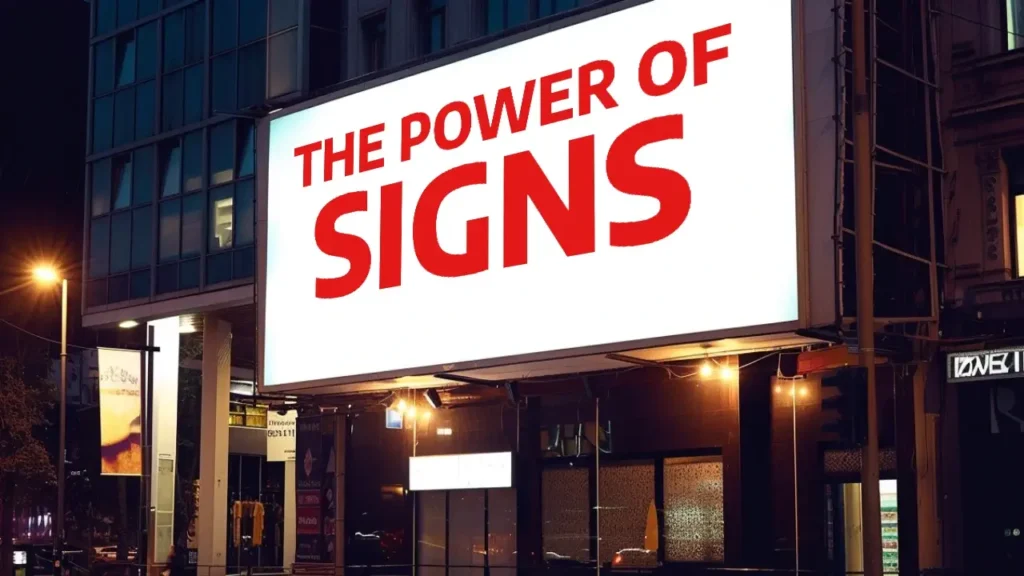You’ve got a vision. You know your brand. And somewhere in the mix of tight timelines and budget constraints, the idea of creating and installing your own signage starts to sound appealing. After all, how hard can it be?
As it turns out—harder than it looks.
While DIY projects can be rewarding in the right context, signage isn’t just another Pinterest project or printout on foam board. It’s a key business asset. It drives visibility, communicates identity, and influences customer behavior before you ever say a word.
So before you hit “order” on an online template or take the vinyl cutter for a spin, here’s a breakdown of why partnering with a sign company isn’t just about outsourcing—it’s about future-proofing your brand.
DIY vs. Professional: What’s Really at Stake?
Let’s start with the basics. DIY signage often feels cheaper and more flexible on the surface. But when you factor in durability, compliance, installation, and the actual impact on customer perception, that savings shrinks fast.
1. Quality That’s Built to Last
A sign needs to survive more than one season. It needs to withstand sunlight, wind, rain, UV exposure, and wear from daily traffic. Materials matter—and not all substrates, adhesives, or coatings are created equal.
Most DIY options fall into two categories:
- Low-cost plastics or vinyl that fade or peel prematurely
- Over-the-counter materials that aren’t rated for outdoor or long-term use
Professional signage uses commercial-grade materials engineered for durability and custom-selected for your environment. That’s the kind of longevity that a trusted sign company delivers without guesswork.
2. Messaging That Hits the Mark
A sign isn’t just a label—it’s a brand ambassador. The way your message is laid out, spaced, scaled, and positioned all affects how it’s received.
With DIY options, it’s easy to fall into common design traps:
- Crowded text or poor font choices
- Low contrast that reduces legibility
- Inconsistent branding or sizing
- Misalignment that looks unprofessional
Professionally designed signage prioritizes visual hierarchy and readability. It also accounts for the psychology of placement, lighting conditions, and audience behavior. That kind of nuance makes the difference between a sign that’s seen—and one that’s remembered.
3. Installation That Works with the Space
Buying or designing a sign is one thing. Installing it correctly is another.
Poorly executed sign install leads to:
- Crooked panels or misaligned graphics
- Fasteners that damage walls or facades
- Adhesive failures due to improper surfaces
- Risk of injury or code violations
Sign installation is part science, part art. It requires understanding mounting methods, substrate compatibility, and even local regulations. A professional install team ensures your signage is not just secure—but safe, legal, and exactly where it should be for maximum visibility.
4. ADA and Local Code Compliance
ADA signage isn’t just for accessibility—it’s a legal requirement for most businesses. DIY signs rarely account for tactile lettering, Braille placement, or proper mounting height. Likewise, local sign codes regulate everything from square footage to illumination.
Overlooking these details can lead to:
- Fines
- Delays in occupancy permits
- Forced removal of non-compliant signage
Working with professionals ensures your signs meet all legal and safety standards—no frantic last-minute adjustments required.
The Hidden Costs of “Doing It Yourself”
Let’s break down what DIY signage often doesn’t include:
- Site survey and measurement accuracy
- Professional-grade mounting hardware
- Warranty on materials or installation
- Permit application and approval
- Long-term maintenance planning
Each of these may seem minor until something goes wrong. Whether it’s a wind-damaged sign or a compliance issue flagged during inspection, the real cost of DIY often shows up later—in time, in budget, and in credibility.
Why Brand Perception Starts at the Sign
Customers judge what they see. A crooked banner, peeling vinyl, or misaligned logo doesn’t just look bad—it creates doubt.
Even subtle missteps in sign design or install can:
- Undermine perceived professionalism
- Confuse foot traffic or disrupt wayfinding
- Signal inattention to detail
- Weaken trust in your brand’s legitimacy
In contrast, polished, well-placed signage says:
- “We’re here to stay.”
- “We care about the experience.”
- “We know who we are—and we know how to show it.”
That’s the difference between looking open for business and being in business.
Experience That Speaks for Itself
A professional sign company brings more than tools and materials. It brings insight.
It understands:
- How to size graphics based on viewing distance
- Which materials hold up in direct sunlight or high humidity
- How lighting affects visibility after dark
- What color combinations pass ADA contrast standards
- Where to place signs so they guide behavior intuitively
It also brings a team of specialists who coordinate everything from site prep to final cleanup—so you’re not stuck on a ladder with a drill and a dozen questions.
Companies like DesignElement Raleigh approach signage as part of your business ecosystem. They don’t just drop signs into space—they install strategy onto your walls.
When DIY Does Make Sense
There’s a place for do-it-yourself signage. Temporary notices, pop-up events, or internal memos often benefit from a hands-on approach. But these are short-term moments—not your permanent brand identity.
If you want your name, your mission, or your message to stand the test of time, investing in professional signage isn’t just wise—it’s foundational.
Final Thoughts: Don’t Just Be Seen—Be Seen Right
Signs are silent communicators. They tell your customers who you are, what you value, and whether you’re worth their time—all in the span of a glance.
When signs are treated like assets—not afterthoughts—they become one of the most cost-effective branding tools you have. And that’s not something you want to leave to shortcuts, stickers, or guesswork.
If you’re serious about your business, trust the process that’s built for long-term results: purposeful design, strategic placement, and professional install. It’s not just signage. It’s your first impression, your street presence, and your visual handshake with the world.







